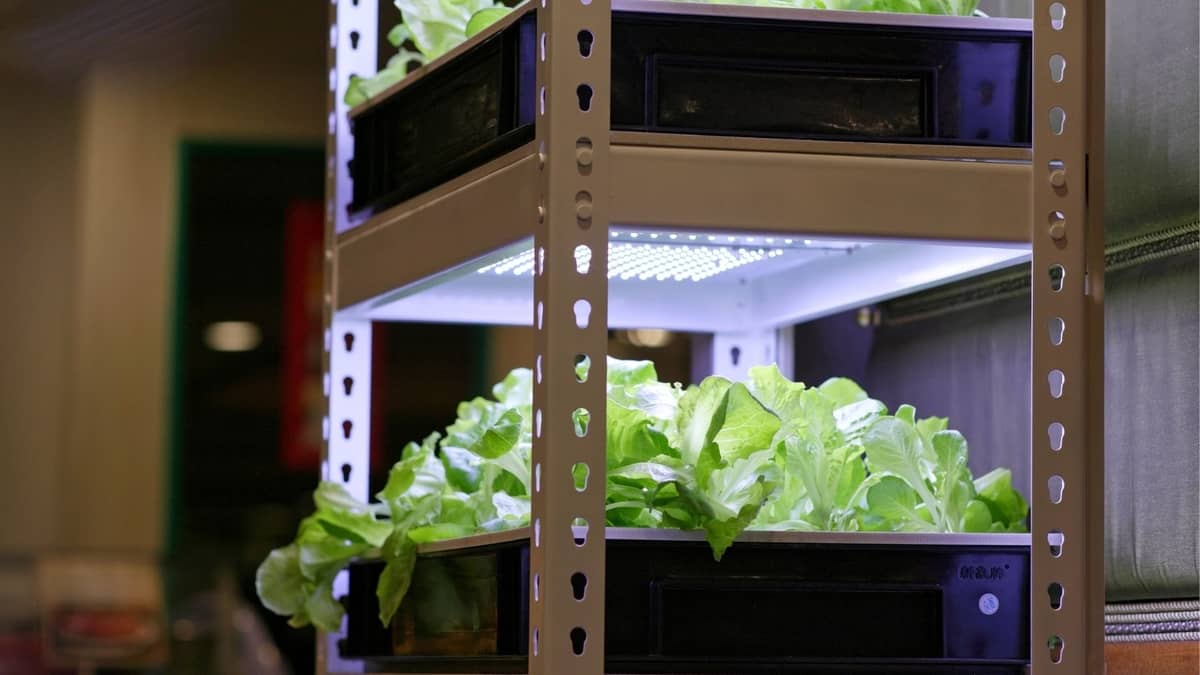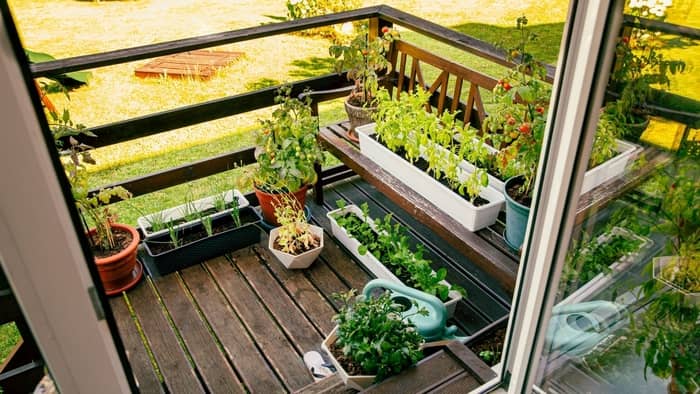Last Updated on April 18, 2022 by Marco C.
Not all of us have the luxury of a backyard, so wondering what kind of light to use for growing vegetables indoors is a relatively common debate, given that more and more people live in apartments, not in houses, because of population density. Growing both fruits and vegetables indoors is now more possible than ever – but securing proper lighting is a big part of that.
In today’s article, we’ll be learning what kind of light to use for growing vegetables indoors.
Natural Light
The most natural option is also the cheapest one in this scenario, but it can be difficult to come by. Some people are lucky enough to have their windows arranged in such a way that they don’t need to secure artificial lighting for their plants. Letting natural light in is the best way to provide lighting for your plants.
Since different plants have different needs regarding lighting, you don’t want them all huddled up in the same spot, receiving the same amount of light.
We have north, south, east, and west-facing windows. North-facing windows usually provide the room with the least lighting out of all the windows. They’re great for veggies that need very little light. However, there are very few vegetables that can survive with so little light, so it’s not likely that you’ll find these windows useful.
We then have the southern window, which is great for most plants – they ensure that the plants get plenty of indirect sunlight for a large portion of the day. This is usually enough lighting for most plants.
Eastern windows provide plenty of direct sunlight before noon, but the situation changes in the afternoon, as the sun moves further west. These windows are great for plants that don’t need direct sunlight throughout the entire day.
Lastly, we have the western windows, which are the opposite of the eastern windows – they provide the plants with plenty of direct sunlight in the afternoon, which also raises the temperature.
Know that having windows won’t guarantee light, especially if there are buildings nearby. Trees are also common blockers of sunlight.
Learn more about: Growing Vegetables Indoors; 8 Beginner-Friendly Favorites
Artificial Lighting
Artificial lighting is professionally called growing lighting, and indoor growing light systems have become more advanced than ever, generally capable of sustaining every plant.
When you’re choosing your growing lights, it’s important that they’re ‘complete spectrum lights’ – this means that they contain the entire color spectrum (the Sun does this naturally). Different plants have different needs when it comes to lighting color, and they’ll grow best if you have full-spectrum light.
We have two options with growing lights – LED and fluorescent lights. Most modern LED growing lights are full-spectrum, not to mention that they’re cheaper and they waste less energy.
Most manufacturers try hard when it comes to LED lights because they’re the future, and fluorescent lights, despite still being used sometimes, are becoming more and more obsolete.
When you’re setting your growing lights, you’ll need to set it far enough (you don’t want your plant touching the bulbs), and you’ll also have to set the intensity – most lights can choose the intensity. This isn’t difficult, as most indoor plants have lighting instructions on them, so you’ll know exactly how far away and how intense the light is supposed to be.
We also have to remember the duration of lighting – plants don’t get 24 hours of light in the wild (except for the few species in the far north) – this information is easily found with the plant that you bought. We have short and long-day plants, as well as day-neutral plants.
Short-day plants need less than twelve hours of lighting per day, while long-day plants need up to 18 hours of light (depending on the species).
Day-neutral plants need between eight and twelve hours of light per day.
Which Is Better?
Natural sunlight is better, without a single doubt, but that doesn’t mean that it’s more practical. Sunlight provides every single part of the light spectrum, while artificial growing lights can’t do that – no matter how advanced and modern they are.
However, artificial growing lights are much easier to come by and control, especially if you live in an apartment. The only time you’re actually going to use natural lighting before artificial lighting is when you’re growing vegetables in an outdoor garden.
Indoor gardens are very difficult to control, light-wise because you usually don’t have enough light. Even if you have enough windows, they’re usually blocked by something.
FAQ
How to grow vegetables indoors without sunlight?
Growing lights are the solution to this problem - LED and fluorescent lights are the two current substitutes to natural sunlight, and they're both good at their jobs, but the LEDs are cheaper and they waste less energy when working.
Can any LED light be used as a grow light?
No, regular LED lights used as interior lighting isn't strong enough to act as a growing light. You need LED growing lights, preferably full spectrum lights - they're the only ones that can substitute the Sun.
What color lights are best for plants to grow indoors?
You need "full spectrum lights" when you're growing indoors. Naturally, the Sun provides plants with a full spectrum of lights, and growing them indoors, you're going to use LED lights - most modern LEDs are full spectrum lights.
How do you grow vegetables indoors without grow lights?
You don't - vegetables can't grow without light (mostly). However, if you have well-positioned windows, you can grow vegetables by using natural light!
To Sum Up
Because of technological advancements, we now have lights that are completely capable of sustaining the growth of fruits and vegetables inside. LED and fluorescent grow lights with a full spectrum of colors are good enough to provide the plants with enough healthy light.
However, nothing can really fully substitute the real thing – and if you have well-positioned windows, make sure to use that natural lighting, as your plants will do much better under natural lights.


